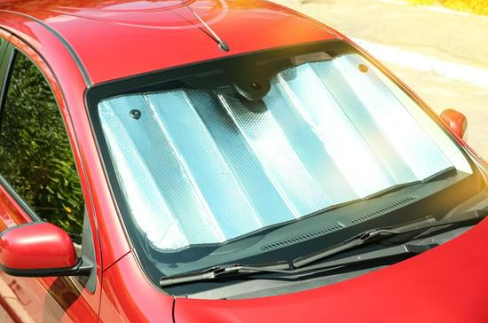Will Bed Bugs Die in a Hot Car? Unveiling the Truth
Have you ever been so frustrated with a bed bug infestation that you considered extreme measures—like leaving your infested belongings in a scorching car all day? If so, you’re not alone. Many people wonder if the intense heat from a closed car can be their secret weapon against these blood-sucking pests. It’s an intriguing concept, isn’t it? However, the solution might not be as simple as it sounds. In this comprehensive guide, we’ll delve into the science behind bed bugs’ heat tolerance, how heat circulates in a car, and whether your vehicle can actually reach the “kill zone” temperature to eradicate these pests. So, Will Bed Bugs Die in a Hot Car?
The stakes are high. Misinformation can not only prolong your bed bug issue but also compromise your safety. It’s crucial to make informed decisions based on proven science and expert insights. So, before you decide to turn your car into a makeshift heat chamber for bed bug extermination, read on. We’ll examine this method’s effectiveness against tried-and-true commercial heat treatments, investigate real-life case studies, and discuss the safety risks involved.
The Biology Behind Bed Bug Heat Resistance – Understanding the Unique Anatomy of Bed Bugs
Bed bugs are more than just tiny nuisances; they are biologically complex creatures that have developed unique coping mechanisms. Features like their exoskeletons and heat shock proteins are just the tip of the iceberg. These allow bed bugs to adapt to various environmental challenges, making them tougher to eradicate than one might expect.
Bed Bugs and Their Natural Habitats
Contrary to popular belief, bed bugs are not just creatures of cluttered homes and unkempt beds. They can survive in a variety of environments, from hotel rooms to public transit. Knowing where these creatures naturally thrive will help you understand the conditions needed to eliminate them. For example, bed bugs often reside in cracks, folds, and small dark spaces, which could potentially provide them a thermal refuge even in a heated car.
The Crucial Threshold Temperature for Bed Bug Eradication

This is where the rubber meets the road—or rather, where the heat meets the bug. According to experts, the lethal temperature for bed bugs lies somewhere around 117-122 degrees Fahrenheit (47-50 degrees Celsius). A publication from the University of Kentucky provides compelling data on how heat treatments can be effective when done correctly. However, to guarantee the extermination of bed bugs at all life stages—eggs, nymphs, and adults—the temperature needs to be both high and sustained for an adequate period.
The Science of Heat in a Closed Car Environment
The Phenomenon of Heat Trapping Inside Cars
Cars can become incredibly hot, especially when left in direct sunlight. The windows act as a catalyst, trapping heat within the interior, often turning your vehicle into an unintended greenhouse. This is known as the greenhouse effect, where solar energy gets trapped, significantly elevating the interior temperature. However, this temperature is not always consistent, nor is it evenly distributed across the entire car. Some spots may be hot enough to harm bed bugs, while others may not.
Understanding Temperature Fluctuations in Cars
The temperature inside your car can be affected by several factors, including the time of day, the external weather conditions, and even the color of your vehicle. For instance, darker colors absorb more heat, potentially reaching higher internal temperatures. Additionally, temperatures can vary greatly within the car, with some areas being cooler due to shade or material composition. This creates “hot spots” and “cool spots,” complicating the idea that a car’s internal heat can effectively kill bed bugs.
Time Factor: How Long Is Enough?
Heat needs to be sustained to effectively kill bed bugs. Short bursts of high temperature may not be adequate. According to a comprehensive study by the Journal of Economic Entomology, achieving a sustained temperature is vital for the successful eradication of bed bugs. A brief spike in temperature may only stun them, allowing these resilient pests to recover once the heat drops.
In summary, while it’s tempting to believe that the trapped heat in a closed car environment can be a fool-proof bed bug killer, the facts present a more complex reality. With fluctuating temperatures and the necessity for sustained heat, relying solely on your car to tackle a bed bug issue may not be as effective as one might hope. Before you consider using your vehicle as a heat chamber, it’s crucial to understand the science that dictates how heat behaves in a closed car environment.
Can Your Car Reach the Killing Temperature?
The Impact of External Weather on Car Interior Heat

Let’s begin by addressing a key factor: the external temperature. Even if you’re dealing with a scorching summer day, it doesn’t automatically mean your car’s interior will reach the lethal temperature needed to eradicate bed bugs. Weather conditions like wind speed, cloud cover, and humidity can all play roles in moderating or amplifying the heat inside your car.
Windows and Ventilation: A Double-Edged Sword
You may think cracking a window could help circulate air, thus maintaining a high temperature inside the car. However, ventilation can also work against you. According to data from the National Weather Service, a cracked window may not significantly decrease the rate of temperature rise in a vehicle. In fact, it can even create pockets of cooler air, potentially offering bed bugs a life-saving haven.
The Influence of Car Material on Heat Retention
Last but not least, the material of your car’s interior can play a critical role in heat retention. Leather seats, for example, tend to hold heat longer than fabric seats. The dashboard and other plastic components can also absorb and retain heat, but not uniformly. Some areas may be well above the lethal temperature for bed bugs, while others may fall short.
Comparing Car Heat with Professional Heat Treatments – The Efficacy of Professional Heat Treatments
Professional heat treatments are designed to kill bed bugs swiftly and effectively by maintaining a consistent high temperature throughout the affected area. These treatments often use specialized heaters and fans to circulate heat evenly, ensuring that there are no cold spots where bed bugs can survive. According to the National Pest Management Association, professional heat treatments are among the most effective methods for bed bug eradication, boasting success rates that far outpace DIY approaches.
The Limitations of Using Car Heat
Will Bed Bugs Die in a Hot Car? Compared to professional methods, using your car as a makeshift heat treatment comes with several limitations. First, as we’ve already discussed, achieving a consistently high temperature throughout the car is challenging. Second, even if certain areas of the car reach the kill zone, that heat is rarely sustained for the period necessary to ensure complete eradication of bed bugs at all life stages.
Cost-Benefit Analysis: Is It Worth the Risk?
On the surface, using your car to kill bed bugs seems like a cost-effective method. However, the hidden costs can add up quickly, from the time spent monitoring the temperature to potential damages to your car’s interior. Furthermore, the risk of incomplete eradication can lead to recurrent infestations, forcing you to seek professional treatments eventually. Thus, the apparent cost-saving benefits may be deceptive.
In sum, while the allure of using your car’s heat to eradicate bed bugs may seem like a convenient, budget-friendly option, a thorough analysis reveals it to be far less effective and reliable than professional heat treatments. The investment in professional services not only ensures a more consistent high-temperature environment but also offers peace of mind through guaranteed results. The stakes are too high to rely on inconsistent and risky DIY methods. Choose wisely to ensure you get rid of bed bugs once and for all.
Case Studies and Real-Life Experiments
Documented Cases: Empirical Data on Car Heat Methods
Before we jump to conclusions, it’s essential to look at real-world cases where individuals have attempted to use car heat as a method to kill bed bugs. Unfortunately, success stories are few and far between, with a majority of these experiments ending in partial eradication at best. This leaves room for recurring infestations, turning the car into a revolving door for bed bug problems.
Expert Opinions: What the Entomologists Say
Entomologists and bed bug experts generally caution against relying on unproven methods like using car heat for extermination. Research from entomological studies, such as those published in Insects, points out that bed bugs have varying levels of heat resistance depending on their life stage and feeding status. Younger bed bugs, for instance, may require less heat to be eradicated compared to adult bed bugs that have recently been fed.
Real-World Experiment Results: The Harsh Reality
There have been cases where car owners have conducted controlled experiments, measuring temperatures at various points in the car over a set period. Even under optimal conditions, the results show a disturbing trend: not all areas of the car sustain the lethal temperature required to kill bed bugs. The partial success of such experiments is a grim reminder that car heat methods are, at best, a gamble.
Safety Concerns and Risks – Human Safety: High Temperatures and Potential Hazards
It’s not just the bed bugs you need to worry about when using high heat in your car. Extended exposure to extreme temperatures can be dangerous for humans and pets as well. Items like aerosol cans or other flammable materials often found in cars can also become hazardous at high temperatures. It’s crucial to remove such items and consider the broader safety implications before attempting any heat-based eradication methods.
Material Damage: The Hidden Costs
Your vehicle’s interior is made of various materials, many of which are not designed to withstand extended periods of high heat. From your leather seats to the dashboard plastics, high temperatures can cause warping, fading, and even melting. In the long run, these damages could lead to costly repairs or decrease your car’s resale value.
Legal Implications: Know the Law
Depending on your jurisdiction, there may be laws or regulations against leaving a car running for extended periods, especially in public areas. Such activities could be seen as environmentally harmful or even a public nuisance. Make sure to check your local laws to avoid any legal repercussions.
Conclusion and Recommendations – Will Bed Bugs Die in a Hot Car?
In this comprehensive guide, we’ve dissected the multi-faceted question: “Will Bed Bugs Die in a Hot Car?” From the unique biology of bed bugs to the intricacies of car temperatures, we’ve explored every angle. The consensus? Using your car as a heat chamber for bed bug extermination is fraught with challenges, risks, and limitations. It’s a method that lacks the consistency and efficacy of professional heat treatments, as confirmed by entomological research and real-world case studies.
For those who are serious about getting rid of bed bugs once and for all, we highly recommend opting for proven methods. Professional heat treatments are the gold standard, backed by years of scientific research and countless success stories. For more information, you can consult resources like EPA’s guide on bed bugs or reach out to certified pest control services in your area.
Your path to a bed bug-free life doesn’t have to be a risky gamble. Make an informed choice and opt for solutions that offer guaranteed results. Thank you for reading, and feel free to share this guide to help others facing the same issue.




